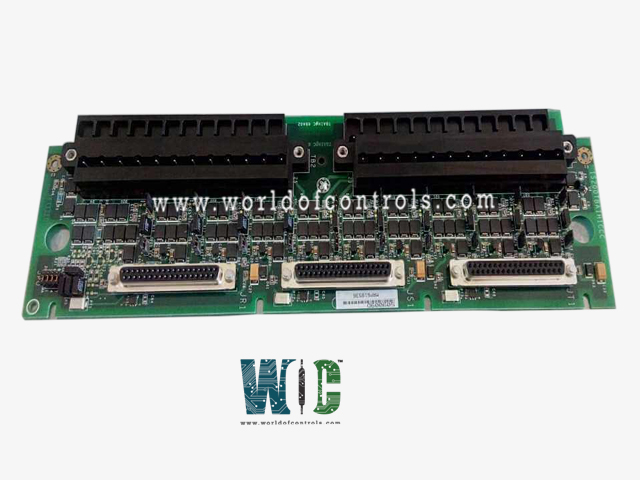SPECIFICATIONS
Part No.: IS200TBAIH1CED
Manufacturer: General Electric
Country of Manufacture: United States of America (USA)
Temperature: -30 to 65oC
Size: 10.16 cm wide x 33.02 cm high
Product Type: Analog I/O Terminal Board
Availability: In Stock
Series: Mark VIe
Functional Description
IS200TBAIH1CED is an Analog I/O Terminal Board developed by GE. It is a part of Mark VIe control system. The Analog Input/Output (TBAI) terminal board is a component within control systems, offering versatile functionality and robust capabilities for handling analog signals. It facilitates the integration of analog inputs, supporting up to 10 channels. These inputs are designed to accommodate various types of transmitters, including two-wire, three-wire, four-wire, or externally powered transducers. This flexibility allows for seamless integration with different types of sensors and measurement devices.
Features
- Analog Output Capabilities: In addition to analog inputs, it provides two output channels that can be configured to output either 0-20 mA or 0-200 mA current signals. This versatility enables precise control and modulation of output signals to meet specific system requirements.
- Noise Suppression Circuitry: To ensure signal integrity and reliability, both input and output channels are equipped with noise suppression circuitry. This feature protects against surge and high-frequency noise, maintaining signal quality and stability even in challenging operating environments.
- Connectivity Options: Designed with three DC-37 pin connectors tailored for connection to VAICs. For simplex applications, a single connector (JR1) is utilized, while TMR (Triple Modular Redundant) applications leverage all three connectors. This setup allows for seamless integration and communication between TBAI and the VAICs, ensuring optimal performance and reliability.
- Operation in TMR Applications: In TMR configurations, input signals are distributed across the three connectors dedicated to the R, S, and T controls. The board intelligently combines the current output from the three connected drivers and determines the total current using a measuring shunt. This total current signal is then presented to the VAICs for regulation based on the commanded setpoint, enabling precise control and synchronization in redundant system architectures.
Diagnostics
- Voltage Drop Monitoring: To monitor output current, the terminal board utilizes a series resistor to measure voltage drop across the circuit. This voltage drop serves as an indicator of the output current level. In case of abnormal current levels, the Voltage Analog Input/Output Cards (VAICs) trigger diagnostic alarms or faults, signaling potential issues with the outputs.
- Connector ID Device: Each cable connector on the terminal board is equipped with an ID device, serving as a unique identifier for the board. This ID device contains critical information, including the terminal board's serial number, type, revision number, and connector location (JR, JS, JT). When the VAICs interrogate these ID devices, any discrepancies or mismatches trigger hardware incompatibility faults.
- Fault Detection Mechanisms: Upon detecting abnormalities in output current or encountering hardware incompatibility issues, the VAICs generate diagnostic alarms or faults. These fault notifications provide real-time feedback on the health and integrity of the terminal board, enabling prompt identification and resolution of potential issues.
- Integration with Control System: The diagnostic information generated by the terminal board is seamlessly integrated into the broader control system. This integration allows operators and maintenance personnel to monitor the terminal board's status and address any detected faults efficiently.
- Benefits of Robust Diagnostics: By leveraging advanced diagnostic capabilities, the terminal board enhances system reliability, minimizes downtime, and streamlines maintenance efforts. Early detection of issues allows for proactive troubleshooting and corrective actions, ensuring uninterrupted operation of the control system.
The WOC team is always available to help you with your Mark VIe requirements. For more information, please contact WOC.
Frequently Asked Questions
What is IS200TBAIH1CED?
It is an Analog I/O Terminal Board developed by GE under the Mark VIe series.
How many channels does the Analog Input/Output Terminal Board support?
It supports a total of 12 channels, including 10 analog inputs (AI) and 2 analog outputs (AO).
What is the input span for transmitters connected to the TBAI?
The input span for transmitters connected to the TBAI is 1-5 V DC, derived from a 4-20 mA current input.
What is the specification for the outputs provided by the TBAI?
The component provides 24 V outputs, each capable of providing up to 21 mA of current.
